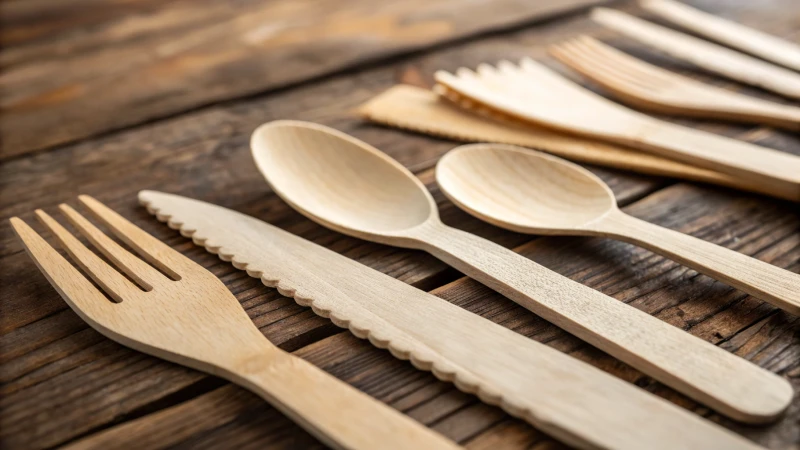
Imagine walking into a bustling café, where the clinking of wooden cutlery replaces the usual clatter of plastic. Curious about what drives their cost?
The price of disposable wooden cutlery hinges on several key factors, including the sourcing of raw materials, the intricacies of the manufacturing process, and the logistics of transportation. Factors like quality, necessary certifications, and customization options also play a significant role in determining the overall cost structure.
When I first started considering wooden cutlery for my business, I quickly learned that understanding these cost influencers is essential. Each factor, from raw material sourcing to manufacturing processes and logistics, plays a unique role in shaping the price. Diving deeper into each element helps in striking a balance between cost-efficiency and sustainability. Let's unpack these aspects further to guide informed purchasing decisions.
Raw material sourcing affects cutlery cost.True
The origin and quality of wood impact the price of cutlery.
Customization options do not influence pricing.False
Custom designs or branding increase production costs.
How Does Raw Material Sourcing Affect Wooden Cutlery Costs?
Discover how sourcing the right materials can transform your wooden cutlery costs and sustainability efforts.
Raw material sourcing significantly impacts wooden cutlery costs, affecting wood prices, transportation expenses, and the need for environmental certifications. Sustainable sourcing might initially seem pricier, but it brings long-term benefits like enhanced brand reputation and alignment with eco-friendly goals.
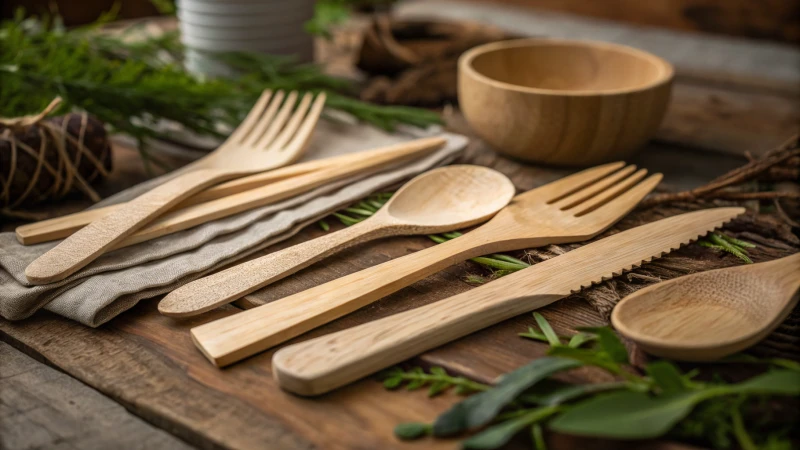
The Role of Wood Type in Cost
Imagine you're sitting at a quaint little café, enjoying a delicious meal with wooden cutlery that feels just right in your hand. What you might not realize is the journey that cutlery took to get there. Different types of wood can drastically change the cost of production. I remember visiting a workshop where they used bamboo and birch, both known for their durability and eco-friendliness. Yet, bamboo was the star of the show—tough as nails and surprisingly sustainable. On the flip side, I saw some cutlery made from pine. It was cheaper, yes, but it felt like it wouldn't last through a hearty meal.
| Wood Type | Durability | Cost Efficiency |
|---|---|---|
| Bamboo | High | Medium |
| Birch | High | High |
| Pine | Medium | Low |
Choosing the right wood is like picking out a pair of shoes—sure, those flashy ones might look great, but will they hold up on a rainy day? It's about balancing cost1 with practicality.
Geographical Sourcing Impact
Where your wood comes from matters just as much as what type it is. Picture this: sourcing locally versus internationally is like choosing between a quick bus ride and an intercontinental flight. Local wood not only cuts down on transportation costs but also lessens your carbon footprint. I once sat down with a supplier who shared how local sourcing saved them from unexpected import tariffs that came out of nowhere.
Factors to Consider:
- Transportation Costs: Shipping from afar is like paying for express delivery on everything.
- Trade Regulations: These can sneak up on you and suddenly hike up your costs.
- Environmental Impact: Local sources often come with a smaller carbon footprint.
Weighing these factors is crucial when making decisions on supply chain management2.
Environmental Certifications and Their Costs
Now, let’s talk certifications. Sourcing certified sustainable wood isn’t just about ticking boxes—it’s about building trust. It reminds me of the time I chose certified organic food over regular produce; it felt like making a small investment in my health. Sure, it might cost more upfront due to certification fees and a limited supply, but the long-term benefits are worth it.
Certifications Impact:
- Enhances brand image and draws in eco-conscious customers.
- Opens doors to potential government incentives.
- Plays a part in global sustainability efforts.
Grasping the long-term value of certified materials is vital for those of us dedicated to environmental responsibility3. Investing in this area isn't just good for the planet—it's good for business.
Bamboo cutlery is more cost-efficient than birch.False
Bamboo has medium cost efficiency, while birch is high.
Local wood sourcing reduces transportation costs.True
Local sourcing minimizes shipping expenses and carbon footprint.
How Does Manufacturing Impact Product Pricing?
Ever wondered why two similar products have drastically different prices? The secret often lies in their manufacturing process.
Manufacturing plays a crucial role in pricing by affecting costs through raw materials, labor, and overhead. Streamlined processes can reduce production costs, enabling competitive pricing and better profit margins.
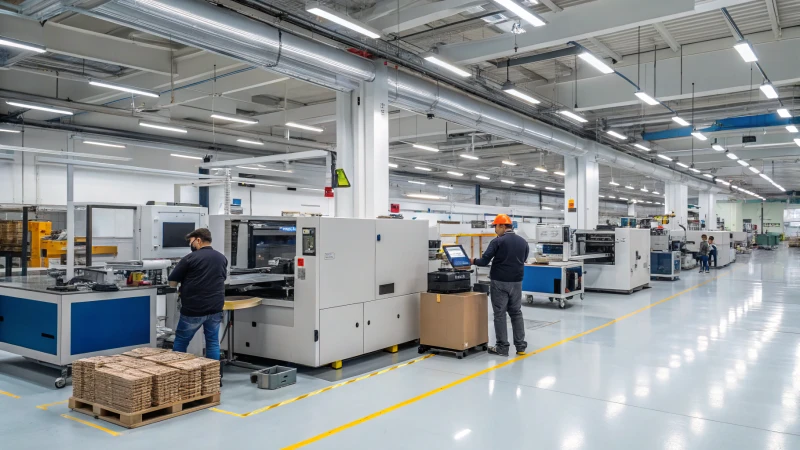
Understanding the Cost of Raw Materials
I remember when I first ventured into the world of sustainable products, the shock of seeing how much raw materials could sway the final price was eye-opening. Take sustainable wood4, for example. The cost isn't just about the wood itself; it's also about the story it tells. Eco-conscious consumers are willing to pay a bit more if they know the product is sourced responsibly. That initial higher cost for materials can actually be a selling point, adding value that justifies a higher price tag.
Labor and Overhead: The Hidden Giants
Back when I was managing a small production team, I quickly learned how labor costs could make or break a pricing strategy. Skilled workers bring their magic to the table, enhancing both efficiency and quality, but they come at a premium. And then there's overhead—those sneaky expenses like utilities and maintenance that quietly add up. Finding ways to trim these costs, like opting for a more cost-efficient facility5, can make a significant difference in keeping prices competitive.
The Magic of Production Efficiency
Investing in advanced manufacturing technologies felt like a gamble at first. But once I saw how automation could cut down on waste and improve precision, it was clear that this investment was a win-win. For instance, watching automated machinery craft each piece of cutlery with perfect precision, reducing material wastage significantly, was like witnessing a well-choreographed dance.
| Factor | Influence on Pricing |
|---|---|
| Raw Materials | Quality and sustainability affect cost |
| Labor | Skills influence efficiency & quality |
| Overhead | Efficient facilities lower costs |
| Production Processes | Technology reduces waste and time |
Economies of Scale: The Bigger Picture
I vividly recall the excitement when we first scaled up production. It was like seeing all the pieces of a puzzle fall perfectly into place. Producing in larger quantities allowed us to spread out our fixed costs over more units, significantly lowering the per-unit cost. This strategy opened doors to competitive pricing without compromising on quality.
For businesses aiming to appeal to eco-conscious buyers, like those with eco-friendly retailers6, understanding these manufacturing factors is key. By carefully analyzing each step in the process, companies can identify opportunities for cost savings that maintain or even enhance product quality and sustainability.
Sustainable materials always cost less.False
Sustainable materials often have higher initial costs due to sourcing.
Automation reduces production costs.True
Automation improves efficiency, reducing waste and labor expenses.
How Does Transportation Influence the Final Cost?
Ever wondered how a simple decision about transportation can ripple through your entire cost structure?
Transportation impacts the final cost by influencing fuel expenses, delivery speed, and logistics efficiency. Opting for the best routes and modes can drastically cut costs, shaping your overall pricing strategy.
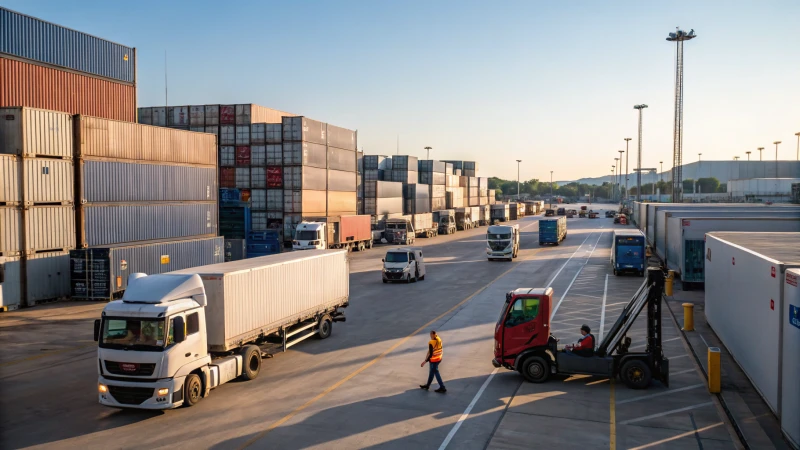
Key Factors in Transportation Costs
I've found that transportation costs can be a bit like a puzzle, where each piece—fuel prices, route efficiency7, and mode of transport—fits together to form the bigger picture. Every choice I make in these areas impacts the final cost of my products. It's a delicate balancing act.
| Factor | Description |
|---|---|
| Fuel Prices | Fluctuations directly impact costs, making budgeting challenging. |
| Mode of Transport | Air freight is fast but costly; sea freight is cheaper but slower. |
| Route Efficiency | I’ve learned that mapping out efficient routes not only saves time but also slashes fuel consumption. |
Impact on Pricing Strategies
I've noticed that every transportation choice I make feeds directly into my pricing strategies. For example, opting for faster delivery can bump up prices, but it might also win over customers who value speed. It's all about tuning into what my customers prioritize and letting that guide my decisions.
Transportation and Supply Chain Optimization
To streamline my supply chain, I've embraced technology for better efficiency. Tools like real-time tracking and data analytics have become my go-to for optimizing routes, cutting delays, and ultimately saving on costs.
Case Study: Wooden Cutlery Distribution
Let me share a glimpse into how these decisions play out in real life. At WonBon, distributing our eco-friendly wooden cutlery worldwide is a logistical feat. By cleverly combining sea and rail transport, we strike a balance between keeping costs down and ensuring timely deliveries. This approach helps us maintain competitive pricing without skimping on quality.
By weaving these insights into my decision-making process, I've been able to make smarter choices about transportation within the supply chain8. This not only boosts our bottom line but also strengthens our market position.
Fuel prices directly impact transportation costs.True
Fluctuations in fuel prices make budgeting challenging and affect costs.
Sea freight is more expensive than air freight.False
Sea freight is generally cheaper but slower compared to air freight.
Are Customization Options Worth the Additional Cost?
Ever wondered if splurging on customization is truly worth it? Let's explore how personalizing products can affect their value and your satisfaction.
Customization enhances product value by tailoring experiences to individual preferences, boosting satisfaction and loyalty. However, it's important to weigh these benefits against the extra costs involved.
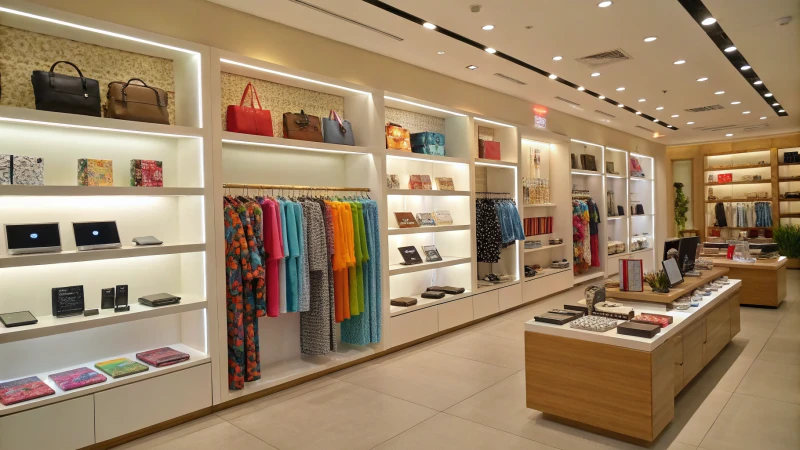
The Appeal of Customization in Various Industries
I remember the first time I stayed at a luxury hotel that offered personalized amenities—my name embroidered on the bathrobe, a curated playlist based on my music taste. It was a game-changer, making me feel special and valued. This kind of customization isn't just a luxury; it creates a personal connection, turning a one-time experience into a lasting memory. Across industries like hospitality9 and e-commerce, customization offers that personal touch, resonating deeply with customers. In luxury sectors, customizable items are more than just products; they're status symbols that justify their higher price tags.
Evaluating Cost vs. Value
When I'm deciding whether to offer customization in my business, I weigh the potential benefits against the costs. It's like deciding if adding avocado to my sandwich is worth the extra charge—sometimes it is, sometimes it's not. A thorough cost-benefit analysis helps determine if these options truly enhance a brand's value proposition. There are factors like production complexities, extended lead times, and possibly needing specialized machinery10 to consider.
| Factors | Impact on Customization Costs |
|---|---|
| Production Complexity | May require specialized skills or equipment |
| Lead Time | Custom options can extend delivery times |
| Material Usage | Unique materials might increase costs |
These can all add up, but when done right, the payoff in customer loyalty and satisfaction can be immense.
Enhancing Customer Experience Through Personalization
I've seen firsthand how customization can light up a customer's face. Whether it's a bespoke product aligning with their personal or brand identity, personalization elevates the user experience to a new level. Studies back this up, showing increased engagement and loyalty with personalized goods. But the real question is whether these advantages outweigh the extra costs involved. The answer often depends on how deeply you understand your customers and their preferences.
Real-World Examples of Successful Customization
Look at how e-commerce platforms11 have embraced customization. Offering tailored products like apparel and accessories has transformed how they connect with customers. This strategy doesn't just boost satisfaction; it provides valuable consumer insights that guide future product development. It's fascinating to see how this approach strengthens brand loyalty and keeps customers coming back for more.
Potential Drawbacks and Considerations
As enticing as customization is, it's not without challenges. I've learned that businesses must navigate logistical hurdles such as inventory management and quality control. Moreover, the perceived value of customized items can differ greatly among consumer segments, requiring targeted marketing strategies to communicate their worth effectively.
By carefully assessing these factors, companies can make strategic decisions about investing in customization to align with brand goals and customer expectations. This ensures the additional costs convert into tangible benefits over time, fostering long-term relationships with customers and bolstering brand loyalty.
Customization always justifies higher pricing in luxury sectors.False
While often true, not all luxury consumers value customization equally.
Personalized goods can increase user engagement and loyalty.True
Studies show that customization enhances customer satisfaction and loyalty.
Conclusion
The cost of disposable wooden cutlery is influenced by raw materials, manufacturing processes, transportation logistics, and customization options, balancing sustainability with cost-efficiency for informed purchasing decisions.
-
Explore this link to understand how different wood types impact the overall cost of wooden cutlery. ↩
-
Learn about the effects of sourcing locations on cost and sustainability to optimize your supply chain. ↩
-
Find out how commitment to sustainability impacts consumer choices and enhances brand reputation. ↩
-
Discover how sustainable wood not only supports eco-friendly practices but also enhances brand reputation among environmentally conscious consumers. ↩
-
Learn effective methods to reduce overhead costs, improve energy efficiency, and boost overall operational savings. ↩
-
Explore innovative sourcing strategies that align with sustainable practices and meet consumer demands for eco-friendly products. ↩
-
Understanding route efficiency helps businesses reduce transportation costs by optimizing delivery paths. ↩
-
Optimizing supply chain logistics enhances efficiency and reduces costs by integrating advanced technologies. ↩
-
Understand how luxury sectors use customization to enhance customer experience and justify higher prices. ↩
-
Discover how specialized machinery affects customization costs and its implications for businesses. ↩
-
Learn from successful e-commerce platforms utilizing customization to boost customer satisfaction and gather insights. ↩

